Alison Tetrick Did Not Sign Up for This
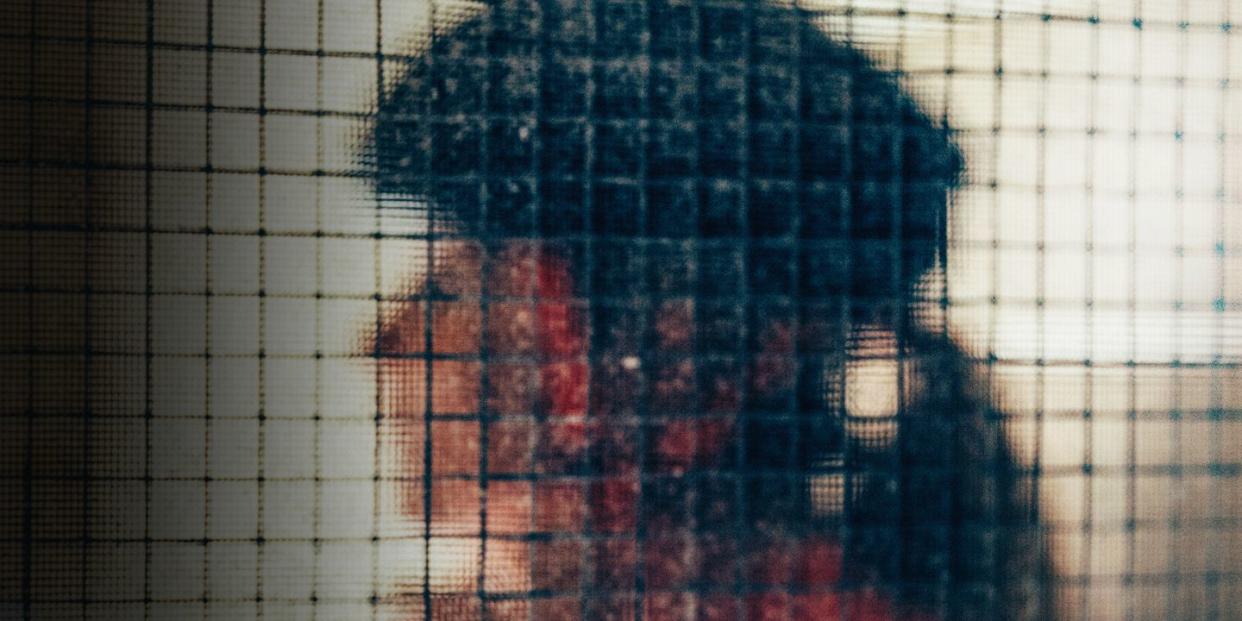
Pro road racer Alison Tetrick exploded onto the gravel scene when she won last year’s Dirty Kanza 200, smashing the women’s course record. Now, she has a sponsorship from Specialized, the freedom to race any off-road events she wants, and a thriving career as a communications consultant. Gravel’s newest star is in a good place. What most people don’t know is the hell she had to go through to get there.
A Childhood of Freedom
I grew up on a cattle ranch in Los Alamos, in Santa Barbara County. When I was in junior high, we moved to another cattle ranch in Redding, California, near Mount Shasta. It was pretty rugged country. I didn’t do a lot of organized sports, because it was a trek to shuttle us to town. Instead, we had family adventures: sailing, four-wheeling, horse packing into the mountains. I grew up with a big imagination. When you’re raised in this secluded way, you don’t feel any gender stereotypes, any limitations.
School, not sports, was where I first exhibited a competitive streak. I always liked to get the best grades in the class, read the fastest and the most. I remember crying if I got an A-minus. For a science project in junior high, I raised 50 mice in the garage to see what was the genetically dominant color. Other people made crystallized sugar.
In high school, I started playing tennis, and I got a scholarship to Abilene Christian University in Texas. I wasn’t the best tennis player. But I got hooked on being on a team with like-minded women-my teammates and I are still in a group text to this day.
There were several things frustrating to me about tennis, but one of them was that when I started that sport, I knew my potential was limited. I didn’t start playing early enough to go pro, and it’s sad when you start a sport knowing your career ends when you graduate college. You can’t be the best in the world. I didn’t know I was bitter about that until later.
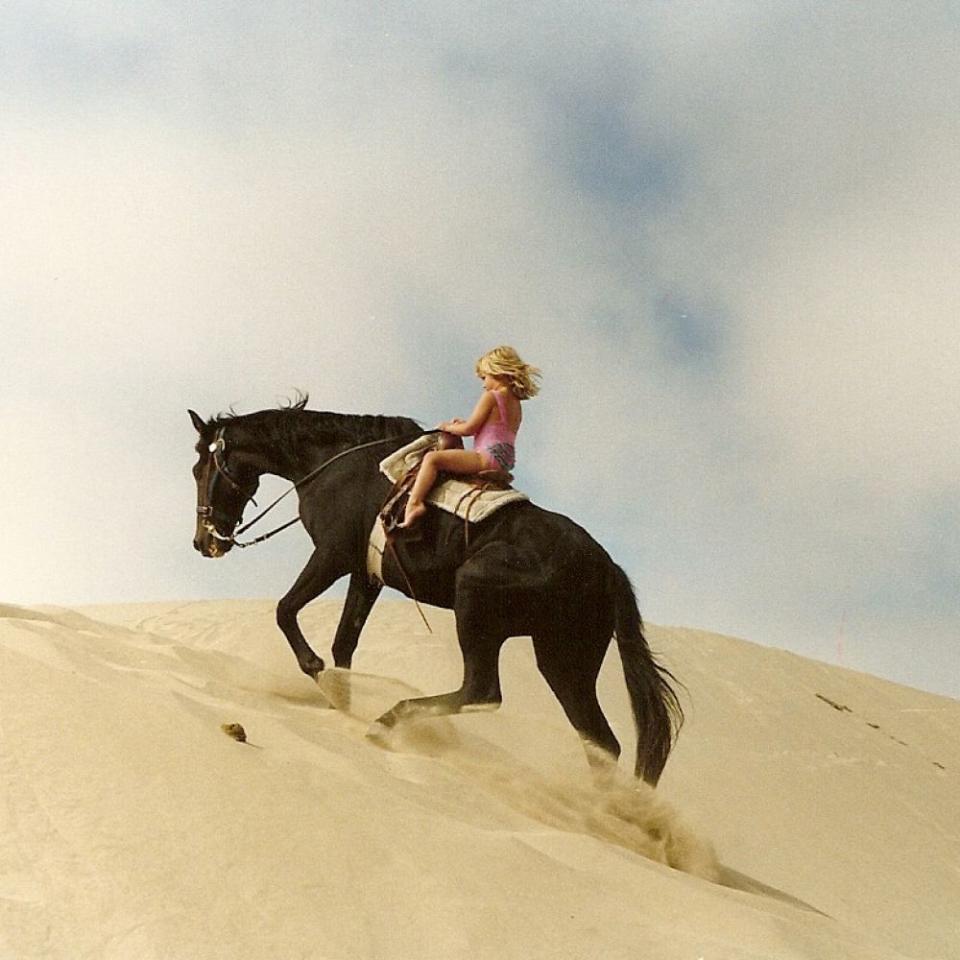
THE NATURAL
My grandpa, Paul Tetrick, who is 87 now, started cycling at the age of 60. He has 17 masters national championships. When I was growing up, he used to tell me I could go to the Olympics for the individual pursuit in cycling. I was like, “Yeah, whatever.” Turns out he wasn’t far off.
When I graduated college in 2006, I still had that competitive streak. I started doing triathlons. I won my age group at the Buffalo Springs Ironman 70.3 in Texas. I thought I was going to be a professional triathlete.
In 2007, I got married and moved to the Bay Area, working in Mill Valley in an exercise physiology lab. People said I should do bike racing for triathlon training, for intensity. I showed up to a couple bike races, and just started winning them. Within a month and a half I was a Category 1, the highest category of racing for women. Within four months of my first race, USA Cycling invited me to a Talent ID Camp. My grandpa lives in Evergreen, Colorado, so he picked me up from the airport and drove me to the Olympic Training Center in Colorado Springs. I don’t think he’s ever been more proud. For the 2009 season, Linda Jackson, founder and president of Team Tibco, gave me a pro contract.
Once I started racing, I felt like I should have been doing it all along. As a tennis player, I always wanted the coach to pick me over another player because I put my heart out there and worked the hardest. In bike racing, I loved the science of the fitness and training, the direct relationship between the time you put in and your performance. I didn’t necessarily feel like a natural in terms of skills. I wasn’t the one that was going to bomb the corner in first. What was natural was the amount I could suffer-you stamp on the pedals harder, and you go faster. You see a finish line and think, I’m going to go as hard as I can. And then you look back and you dropped everybody: Oh, huh. Maybe I found my sport.
I never felt naturally comfortable in a pack. I can do it, but my sweet spot is time trialing. I win most of my races solo. (Of course, the better I got at that, the more my competitors figured it out.) I have an engine, I have the will, I have the strength. My strategy was never to sneak through the hole in the peloton-it was to outpower whenever I could. That’s where I have my faith.
THE CRASH
It was 2010, and I was having a good season. In June, I was in the yellow jersey at the Nature Valley Grand Prix. Then I got a late call-up for the U.S. national team to go to the women’s Giro d’Italia in July, which we won with American climber Mara Abbott. I flew straight to Bend, Oregon, for the Cascade Cycling Classic. I placed third in the prologue, and went into stage one thinking everything was coming together. I had done all this work at the Giro; now it was my time to shine.
We were coming down a descent. The descents in the Cascades aren’t overly technical, just fast, and I felt confident in my handling skills. I was even talking to people. Somebody said, “Your number is hitting your back wheel.” I reached back and tried to fix it. When I looked up, somebody had crashed in front of me.
I tend to ride always knowing where my closest exit is, and maybe that’s what I do in life, too. You never find me smack in the middle, hunkered down. I had an exit, so I went to take it. But another rider panicked, grabbed a fistful of brakes, and took out my front wheel. Like in a rodeo, I was bucked off my bike, and went flying over the handlebar.
According to my cycling computer, I went from 45 miles an hour to zero. I didn’t slide, didn’t tear shorts, didn’t bleed. I just hit the ground. I landed on my hip and head, and shattered my pelvis.
I was unconscious for three minutes, then in and out. I don’t remember much-cars going by, there was a volunteer with me. I think I just kept saying I was going to die. I’d never been in so much pain. I remember the girl that crashed into me saying, “I’m so sorry.” I ended up being on the pavement for an hour and a half before being airlifted out, so long that the road opened again, and they had to direct traffic around me.
This was a bit before concussions began getting more mainstream attention. In the emergency room, they did CT scans. CT scans look for brain swelling and bleeding, which could require emergency surgery. We still don’t really have a technique for seeing a concussion, which is a type of traumatic brain injury (TBI).
I didn’t leave the hospital thinking I had a TBI. I got a form saying I had a concussion, but concussion didn’t sound scary. A broken pelvis, can’t walk, that sounded really scary. Now I have learned the hard way-that probably was the least of my worries.
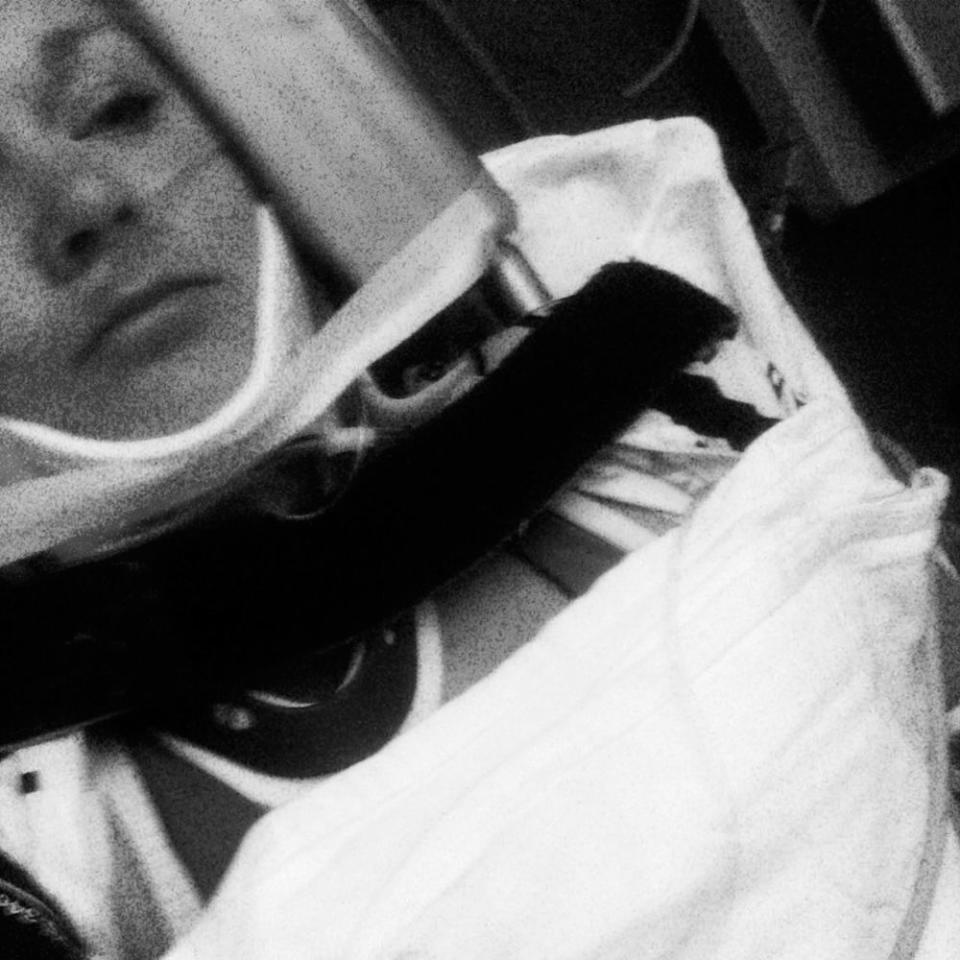
THE COMEBACK
It was a crazy time. I was fixated on my broken pelvis. I was trying to figure out what team I was signing on to the next year. There was a lot of upheaval in my marriage. We ended up going through a divorce. Between all this, I didn’t take any time to think about my head. It was hard to discern what was the head injury, what was the relationship collapse, and all the other emotional turmoil. I focused on the bike as therapy to mask the symptoms of insomnia, paranoia, and dense, never-ending fog.
My first race back was the Merco Cycling Classic in Merced, California, in March 2011. I won the time trial in the second stage, and defended it for three days to win the overall. My comeback felt pretty gratifying, but it also gave me more external validation that I was okay. Now, looking back on it, I know I wasn’t healthy.
Throughout my recovery from my broken pelvis, and after, I felt vulnerable and fragile, insecure and mentally frail. And not just on the bike, but also in my relationships, even with my family. But I didn’t want to ask for help. I wanted to pull myself up by my bootstraps, cowgirl up.
I also didn’t want to admit I wasn’t okay because if I admit that, and I’m leading a bike race, I’m going to get stuck in a corner because people know I’m going to have a panic attack. That stuff is like blood in the water to the wrong people. As a professional athlete, you hide your weaknesses. It’s easy to do when you have that gold-star result, or a big social media following, or this ad that you’re in. You can constantly find ways to tell yourself, “People like me. I’m normal. I’m okay.”
Deep down I was like, I don’t know if I’m okay. I am just going to drink this bottle of wine at home and pretend I’m okay. Do it all again tomorrow.
That year, I’d get lost in airports on the way to races. I’d call my mom: “I don’t know what city I’m going to. Don’t know what race.” My lips would get numb. Sometimes I’d feel a little drunk when I hadn’t had a drink. I started getting so tired-not physically, but emotionally. I would get flooded. I’d get in a fight with somebody, and it felt like a water faucet was turned on in my head: It’s almost to my ears; it just covered my ears. Then I’d be staring at this person who was very upset. I knew I should cry: Insert tears here, Alison. Insert remorse, insert sympathy, insert regret. But I couldn’t feel anything.
This was all before the 2011 concussion.
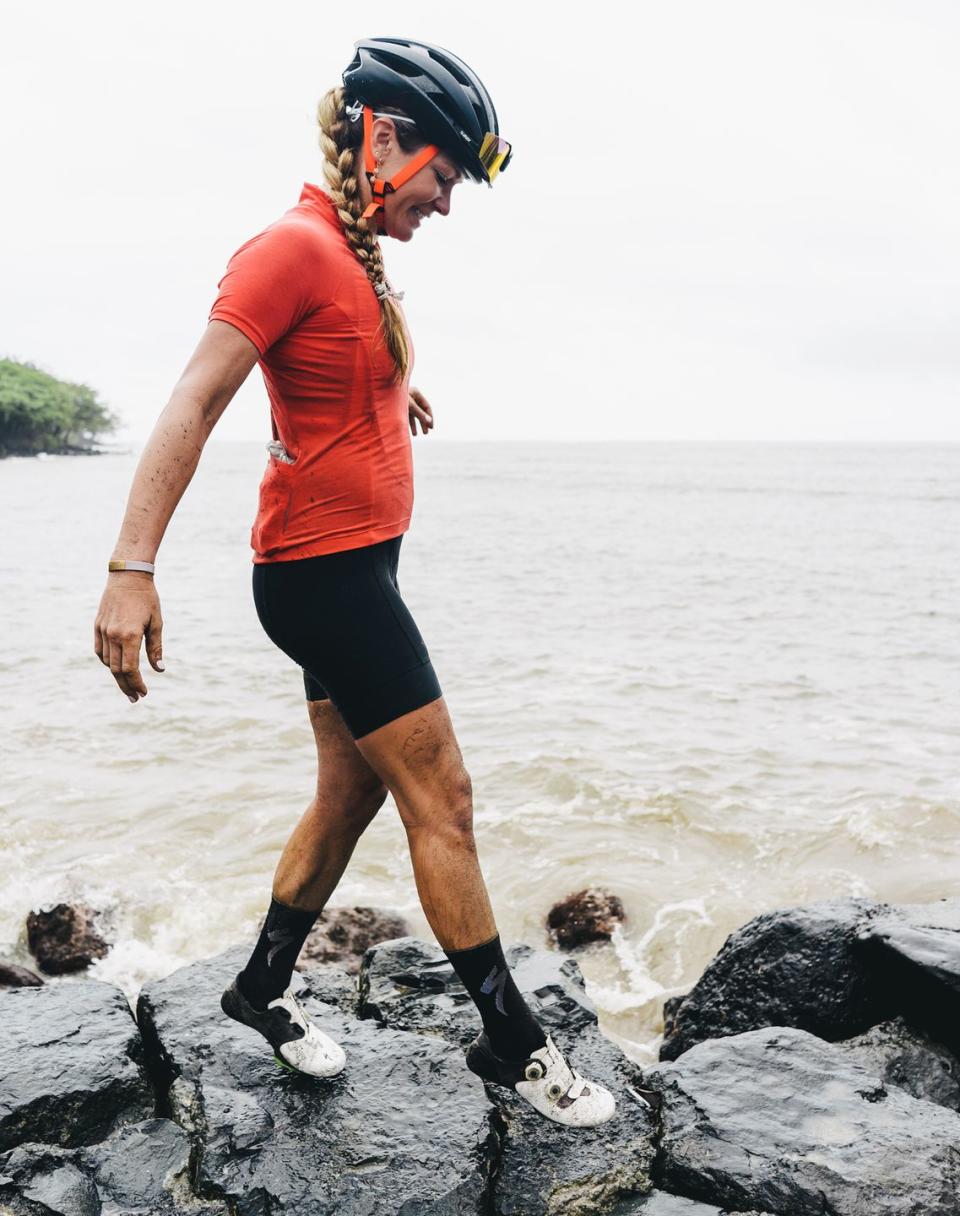
LIGHTS OUT
It was 15 months later. Life had settled down a bit. I was stronger. The divorce was finalized. The head symptoms had quieted down as well, or at least I was better at drowning out the noise. I got the opportunity to go to the 2011 Pan American Games in Guadalajara, Mexico, for the time trial, and I was so excited. It was in October; I spent all of August and September preparing. I went to Tahoe, California, to do altitude training and lived like a monk.
The Pan Ams were in downtown Guadalajara. The race started at 7:00 in the morning. Because the course was downtown, we could only do a pre-ride right before the start. It was pitch dark out. I hit a storm grate that was lined up the wrong way, and my front tire went into the grate. I flew over the handlebar, and smacked my head.
My start time was in eight minutes. I went right back to the team: “I just hit my head. Can you make sure I’m not going to die?”
They asked, “Well, are you fine?”
Of course I said, “Yes, I’m fine. I’m still going to race.” I had been training for this forever. So I lined up. I missed a turn. I ended up fifth. I don’t remember the race at all.
Then it was just lights out. I couldn’t even drive home from the airport. My parents had to drive five hours up to Reno, Nevada, to pick me up, and figure out how to get my car back. This time I let them help. I was 26 years old, and like, “All right, Mom, come get me.” They took me back to the ranch in Redding, and I just sat in my childhood bedroom and thought, “This is my new life. I can’t do anything.” I had made this race the defining moment in my career, my identity. I felt like I had failed. And now I had a second concussion.
I stared at the wall for weeks, couldn’t move, couldn’t stop crying. The depression wouldn’t go away. My parents sent me to psychologists. They had me go to a neuropsychologist, and work with chiropractors who could help with brain injuries. We were trying everything, because I couldn’t function. I couldn’t sleep-I had to go on sleeping pills.
When I went for a physical with my team doctor that winter, she realized I couldn’t read. I could read a menu, or a short text message, but nothing longer. I wasn’t absorbing it; I’d just put it down. The doctor told me, “You can’t race. It’s not your concussion now, it’s the next hit.”
It was hard to stay optimistic. The first crash had felt like my obituary. When people heard about the second, they said, “You still got 5th place.” Without that public understanding that something really horrible happened, I had to come back from something that was private and internal, and almost darker because of it.
I didn’t know if I could come back the way I did that first time. I put everything into it, then it still went wrong, and I felt so cheated by the bike. You’re not supposed to make a comeback just to land on your face again.
I also didn’t know why I wanted to come back. I went to a neuropsychologist (who I still work with). Eventually I was allowed to ride my bike to his office, six miles from my house. He kept asking, “Why do you need to come back?”
Finally, one day I was like, “Because this effing bike owes me something. I did not have all this happen in my life for the last two years to not to be able to come back.”
I thought he was going to think I was crazy. But he said, “That’s actually the most sane thing you’ve said in a long time.”
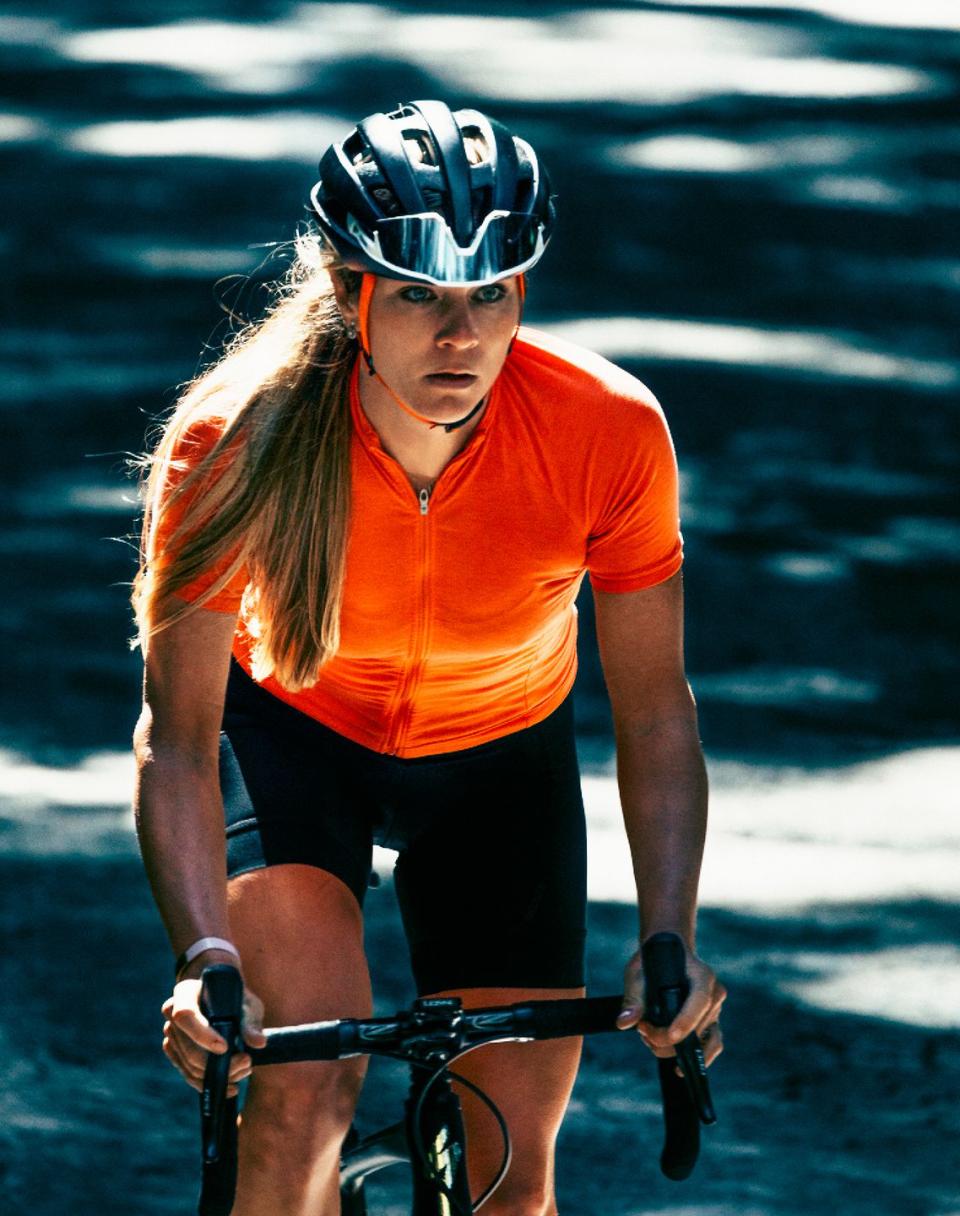
RIDING ALONE IN THE DARK
That second crash was in October. My first race back was the Sea Otter Classic in April 2012. It was a stage race then-a criterium, a road race, a time trial, and a circuit race.
At the start line of the criterium, I was very nervous, and very angry. These people-the other racers, our sponsors, team staff-were my friends, my family, and everyone was like, “Welcome back, it’s good to have you here.” I was glad I had the biggest glasses on because I was crying. I felt like, “You guys have no freaking idea what I’ve been through.” What I really wanted was for somebody to congratulate me for being alive. After all the mental anguish and all those dark places I had been, I just wanted somebody to say, “Hey, Alison, you didn’t commit suicide. You’re here.”
The criterium started. I’d always had a healthy dose of fear, but now I was coming back into a crit with two 180-degree turns that people always crash in. I thought, This is not the smartest thing I’ve ever done. I was scared to hurt myself and go back to where I’d been. I wasn’t even better yet. But I knew if I didn’t show up that day, I never would show up again.
There were moments when I almost had a panic attack; I was hyperventilating, getting hot and cold. I wanted to close my eyes, but I was going 30 miles per hour on a bike. There was a crash in front of me, but I avoided it. My goal was to get the same time as the field, so I couldn’t get gapped into the finish. The line was 300 meters out of a hairpin, so it was gnarly. But I survived. Afterward I cried because I was so relieved to be okay.
That was one of the worst days. Things slowly got better, more normal.
It was the start of a new chapter and a new approach to the sport. I was trying to rewire my brain, with help from professionals, but also my mom. She helped me learn how to read longer things again. We used the Bible, because I already knew it so well. I also went back to school and got an M.S. in clinical psychology. I was teaching my brain to learn again.
I raced for two years on the antidepressant Wellbutrin. During that time I didn’t really have emotional highs or lows, I just felt flat. It helped me sleep more, calmed my brain down-but it was on a constant simmer instead of a boil.
I remember being at The Exergy Tour that same year, sitting at the dining table with my team. A teammate had crashed that day and we had lost. I had this out-of-body experience where I was watching myself from above. People were looking at me, and I knew they wanted me to be normal, happy, chirpy. That’s part of what makes me a good teammate-I can be positive and uplifting. And I couldn’t do it. My teammates were waiting for me to say something, but I was super quiet. They were like, “You’ve changed. What’s going on?”
“I don’t know. I hit my head.”
I left my domestic team to go race on Astana mid-season in 2014. I couldn’t make a comeback with people who kept telling me that I’d changed. I moved to Italy, and we got a bronze medal at the World Championships in the team time trial that year. I did well out there, and got a lot of UCI points.
I’m envious of newer bike racers who haven’t experienced a major setback yet. Sometimes I try to remember what it was like to feel like that, before I was always thinking, “I don’t want to crash again.” I never came back at the same capacity, but in some ways, I came back better. I had to learn how to separate myself from the sport-to still be passionate and love it, but to know it’s not the only part of who I am, and not worth dying over.
I knew I was done with road racing in 2016. I loved my team, Cylance Pro Cycling, a women’s WorldTour team. But there was this one moment around my birthday, when we were in Belgium. We had raced the Tour of Flanders the day before, which is the best bike race in the world, so fun. But the next day, we had to go and do a lower-level UCI race nearby. There were about 250 riders from Dutch and Belgian club teams, and most of them hadn’t raced Flanders. They were taking all these risks.
I saw a girl hit a light pole. I’ll never forget it. And it was over nothing. I looked over at American racer Lauren Komanski, who was riding next to me, and I said, “You can quote me, I am never doing this race again.”
I felt done with road racing, but the team asked me to stay for one more year. I said okay, but listed all the races I didn’t want to do. I told them I was in for Amgen Tour of California, given that I work at Amgen. “And I want to do Dirty Kanza.”
REVELATION IN THE FLINT HILLS
In 2017, I went straight from the Pan Am Championships in early May, to the Amgen Tour of California, to Emporia, Kansas.
The morning of Dirty Kanza on June 3, I knew I was going for the win. I also knew I was entering the unknown. I had never ridden more than 125 miles. How do you take care of yourself, what do you eat on a 206-mile gravel ride? I bought everything at the grocery store: donut holes, frosted circus animals, potato chips. I didn’t know what I was going to crave.
The first 100 miles, I just sat in the lead group of men. For the second, I reset to my own speed. I chuckled, because I found myself saying, “Now you just have another century.” Who says that, ever?
At 162 miles, I went through the third checkpoint. It’s where I made my first mistakes.
Kanza is so different from road racing in that it’s self-supported, down to having the GPS tell you where to go-there are no signs. I was stressed out because I’d been by myself for a really long time and I was in unknown territory in terms of what my body was doing. I was also hallucinating-around 150 miles you start seeing things. I got into the checkpoint, and someone said, “You’re the first woman, but Amanda is only three minutes behind.” (Amanda Nauman was the reigning 2015 and 2016 women’s champion.) I grabbed all my stuff in a rush. Then I took a wrong turn. Then I started cramping.
I told myself, “It’s okay, I’ll take a nice big swig of this cold electrolyte drink.” I reached down to my bottle and it was hot, sticky, and empty. No! I had forgotten to grab a bottle.
I had to ration my Camelbak for the next 44 miles. I was suffering. I started talking to myself. A guy went by and looked at me like I was crazy.
Amanda and I rode the last 20 miles together. We had raced very differently, but somehow after 200 miles our races converged. She was putting in some good attacks and I was countering them, but as we rode into town and toward the finish together, I realized another mistake: I never rode the finish. I rode the start over and over for preparation, because I was nervous about the gravel, the first turn, what line I wanted. For the finish, I’d thought, How can you get lost in town?
Now I was thinking, Alison, you are so dumb. Is the total mileage 206.3? Is it 206.1? 206.7? This matters when you’re riding in with someone.
Amanda attacked over a hill into town, and I counterattacked again, and as I went by I saw her shoulders slumping. I thought, She’s tired, she’s done. I got this, I just won. I flew down the hill into town, then looked back and she was taking a left behind me. I’d missed another turn.
I felt the rage of everything ever in my cycling career and flipped it. I had to chase her and pass her in the finishing chute. Amanda is a very positive, strong, and wonderful person, but I had seen her shoulders slump, and I’d felt that energy. I knew that, in those 30 seconds, she’d processed losing, and I’d processed winning. All I had to do was get my tire by her.
I uttered a growl, or maybe it was a scream, as I came down that finishing chute. The cones were getting narrower and narrower. I was going for it. I didn’t care.
It was a very tight finish, a sprint. As I crossed the line, the only thought in my mind was, I did it. I did it. I was so happy. Rebecca Rusch was there spraying me with champagne, and I was thinking of everyone who supported me, the other riders I was texting and asking questions, my coach. It was one of my only big wins that felt like it was for everybody else.
I stayed up at the finish line until three in the morning, cheering, drinking, with the thousands of people still out there.
The next day, I woke up and my body was smashed. I had hit new limits. And I was hooked. I immediately signed up for more gravel events. It was all I wanted to do.
The gravel thing has kind of changed my life. It’s given me a new culture, a new scene, and a whole new bike community. When you go and race Flanders or the World Championships, you don’t really get to connect with your community. You’re on a platform. At a gravel race or a fondo or an enduro, you do the same course, and everyone has a great story to share at the end of the day. Everyone gets completion credit, compared to getting dropped in a crit, which sucks.
THE PERSON ON THE OTHER SIDE
I said goodbye to a lot of those road races in 2017 without telling anybody save my family. But I didn’t say I was retiring. That’s not my style. I’m pivoting.
I’m actually riding more now. I just happen to love riding my bike. I’m doing more local adventure races, like the Grasshopper Adventure Series. I’m embracing riding longer. When I was road racing 96 days out of the year, I had to rest either before or after races. Now, every weekend I’m like, “Who am I gonna ride 100 miles with?”
People ask whether I’m recovered. With head injuries, it’s not like a broken bone; you don’t get a cast and then it’s healed. The long-term effects are still unknown. Every day you have to make a choice for your mental health, and possibly deal with physical side effects. The light from a computer screen bothers me; sometimes I get a little vertigo. I can’t watch movies with a lot of flashing lights because it could trigger symptoms. Small things, but they’re a daily battle. And I still get emotionally flooded. It’s an injury that you can’t see.
My personality is different too. My parents say, “We miss these parts about you that have changed.” I am a little more brash, a little snappier. But I kind of like it, because I’m usually a people-pleaser. I’m more assertive now.
It took time to accept that this was my story. Now I can finally get through it without crying. I used to get angry, like, “I don’t want to be that girl,” or “I didn’t sign up for that story.” Well, that’s my frickin’ story.
You Might Also Like

